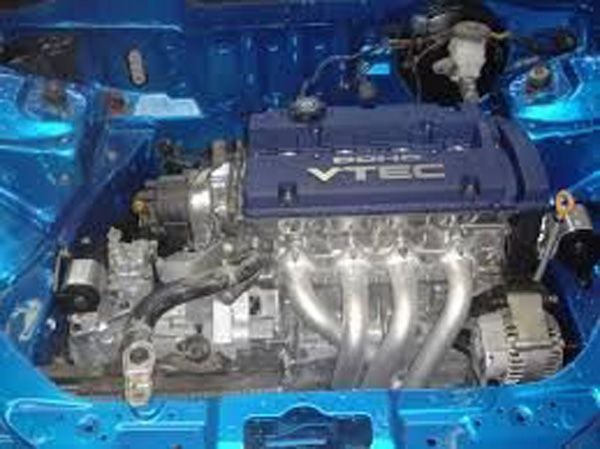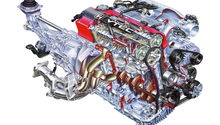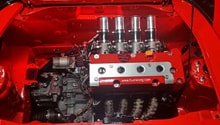Honda Accord: H22A vs. F20B Engines
What's the best engine, the F20B or the H22A? If you're going to answer that question, then you need the facts. Here are some information that can help, which will include the specs, comparison, upgrades, performance, and interchangeable parts. Keep reading to learn all you need to know about the Honda Accord's engines.
This article applies to the Honda Accord (1990-2002).
The F-Series was considered Honda’s big block inline four-cylinder motor when it was introduced in the early 1990’s. The F-series has a solid-aluminum or cast-iron open deck, magnesium/aluminum cylinder head, and cast-iron sleeved block. The cylinder head is the DOHC VTEC. Honda used the engine in the CF4, CF5, CF9, and CL3 Accords, as well as in the Torneo (Japan). The manual-transmission version employed stronger intake, throttle body, and cams borrowed from the H22 type S engine.
Honda introduced the H22 engine series in 1993, and the company used the H22A1 in the Prelude VTEC until the end of the car’s production in 2001. As Honda’s high-performance engine, drivers raced variations of the motor to compete as well as win in the European F3 Series, the British Touring Car Championship, and the Japan Touring Car Championship.
F20B Specifications
- Valve train: four-cylinder, DOHC VTEC, 16-valve
- Bore: 85.0 mm
- Stroke: 88.0 mm
- Displacement: 1997 cc
- Torque: 145 lb/ft (197 Nm) at 5,500 rpm
- Horsepower: 200 hp (150 kW) at 7,000 rpm
- Red line: 7,400 rpm
- Compression: 11.0:1
- Fuel control: Honda Systems PGM-FI with port fuel injection

H22A Specifications
- Bore × Stroke: 87.0 mm × 90.70 mm (3.425 in × 3.571 in)
- Displacement: 2,157 cc (131.6 cu in)
- Torque: 161 lb/ft (218 Nm)
- Valve configuration: DOHC, 16 valves, VTEC
- Type: inline four-cylinder, aluminum head and block
- Compression ratio: 10.0-10.6:1 (North America), 10.0-11.0:1 (Europe), 10.6-11.0:1 (Japan)
- Maximum power: 185-220 hp
- Red line: 7,200 - 7,600 rpm
- Rev cut: 7,400 - 8,000 rpm
- Fuel system: Honda Systems PGM-FI with port fuel injection
- Valve gear: belt-driven dual overhead cams, four valves per cylinder, variable timing and lift
- 1992-96 versions use closed-deck blocks. Honda used FRM liners in 94-96, while the 1997-2001 editions have open-deck blocks with FRM liners.

Pros and Cons
The H22A produces 200 hp and 161 lb/ft of torque. The F20B also produces 200 hp, but 145 lb/ft of torque. The F20B cost is less than $1,000 for the manual transmission version, $1,500 with ECU (engine control unit) as well as transmission, and $2,000 with ECU, including LSD (limited slip differential) transmission. The H22A is about $1,000 for the engine alone and about $2,000 for the engine with ECU as well as LSD transmission. These are approximate prices for used motors. With its higher compression and lower displacement due to a smaller bore and stroke, the F20B looks to be more of an ideal candidate for a high-revving, naturally aspirated build. The larger H22A seems like it may have a higher threshold for tolerance to boosted builds. If turbocharging is in the future, you may want to look at the H-Series motor.
Interchangeable Parts
Some parts between the two motors are interchangeable. For example, you can use the H22A’s valve train, cam gears, and camshafts in the F20B head. If you want to build the F20B block, you have to bore it to at least 87 mm for H22A aftermarket pistons.
Upgrades
You can upgrade the F20B head to produce more power without doing anything to the engine block. The F20B block can rev up to 9,000 rpm, and still be a reliable ride. This is because the F20B has a better R/S (rod length to stroke length) ratio than the H22A. You can add camshafts like the Skunk2 Stage II cams to the F20B, which allows the camshafts to take advantage of the engine's high 11.0:1 compression ratio. When you make these valve train changes, the F20B provides more horsepower and the same torque as the H22A, allowing you to rev it farther.
Response
Response is largely a driver-dependent concern. If response means the engine's willingness to rev and the immediacy of the throttle pedal spinning the motor up, then the F20B is your engine. If your definition of response is in having a more immediate spread of torque available throughout the rpm range, then the higher displacement H22A is the winner.
Related Discussion
- F20 vs. H22 - Honda-Tech.com
- Which Motor is Best for Accord? - Honda-Tech.com
- Interchangeable Parts - Honda-Tech.com
- Which is More Powerful? - Honda-Tech.com






